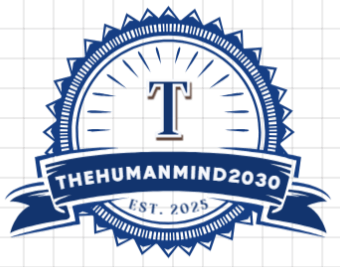society will experience shifts in how we perceive intelligence, identity, and purpose. While challenges lie ahead, the potential benefits of this partnership are immense—from curing diseases to unlocking new dimensions of creativity and understanding.
By fostering a balance between innovation and ethics, humanity can ensure that the decade ahead is marked by progress, inclusion, and empowerment. The journey to 2030 is just beginning, and the synergy between AI and the brain holds the promise of a future that is as exciting as it is transformative.
🧠 1. Brain–AI Merging: From Interfaces to Integration
By 2030, we’re likely to see advanced brain–computer interfaces (BCIs) moving from labs into real-world use.
Neuralink, Synchron, and others are already creating devices that can translate brain signals into computer commands.
By 2030, these could:
Restore movement or speech to paralyzed individuals.
Allow thought-based control of devices or even vehicles.
Merge with generative AI systems to let people “think and create” directly — writing, composing, or designing through thought.
🤖 2. AI Modeled on the Brain: Neuromorphic Computing
Future AI may think more like us.
Neuromorphic chips (like Intel’s Loihi) mimic the structure of neurons and synapses, making machines faster, more efficient, and biologically inspired.
By 2030, these chips could power AI that learns and adapts in real time, just like the human brain — less “coded,” more “grown.”
🌍 3. The Cognitive Revolution: Human–AI Symbiosis
The line between “using AI” and “being AI-augmented” will blur.
We’ll move from smartphones to “smart selves” — where AI assistants are context-aware, emotionally intelligent, and linked to our neural patterns or biosignals.
AI will predict emotions, optimize decisions, and boost creativity — almost like having a cognitive twin.
🧬 4. Neuro-AI and Consciousness Research
By 2030, neuroscientists may use AI to decode how consciousness emerges from neural activity.
High-resolution brain scans + generative AI models may map thought patterns in real time.
This could lead to breakthroughs in understanding sleep, emotion, memory, and even mental illness.
⚠️ 5. Ethics, Identity & the Soul of AI
With all this power comes deep questions:
Who owns your thoughts when they can be digitized?
If an AI learns your memories, is it you?
The next decade will demand new ethics around mental privacy, AI consciousness, and digital personhood.
🚀 In Short — “The Brain of 2030”
It won’t just use AI — it will think with it.
The real evolution will be cognitive fusion — human intuition powered by machine intelligence.

